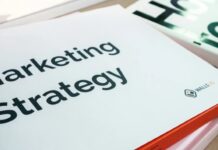Consumers spent more than expected amid high inflation and high interest rates during 2023, but spending growth is likely to slow in 2024, National Retail Federation Chief Economist Jack Kleinhenz said today.
“The 2023 U.S. economy was marked in large measure by the impressive resiliency of the consumer,” Kleinhenz said in a news release. “A year ago, many commentators were skeptical and calling for a recession, but the recession never came. With each passing month, consumers kept spending despite inflation and higher borrowing costs.”
“Nonetheless, those tailwinds are not necessarily sustainable,” Kleinhenz continued. “Tighter credit conditions along with higher borrowing costs continue to be in place now that we’ve turned the page on the annual calendar, and employment reports confirm that the labor market expansion is slowing.”
Inflation Still Impacting Consumer Spending
Kleinhenz’s comments came in the January issue of NRF’s Monthly Economic Review, which said 2023 spending was supported by a tight labor market, a “wealth effect” from a rise in equity and home prices and savings built up during the pandemic. Inflation-adjusted gross domestic product grew a “solid” 2.3% over 2022, the NRF states.
December’s unemployment rate of 3.7% was one of the lowest in decades. And the 4.5% year-over-year increase in wages outstripped the year-end 2.6% rate of inflation as measured by the Personal Consumption Expenditures Price Index followed by the Federal Reserve, according to the NRF.
Unadjusted for inflation, consumer spending was up 5.2% year over year in October and November, boosted by a 7% year-year-over increase in disposable personal income. Core retail sales – excluding automobile dealers, gasoline stations and restaurants – were up 3.7% year over year for the first 11 months of the year, the NRF states.
The Labor Market Set to Cool
Job openings fell to 8.79 million in November, the lowest level since March 2021. And while the Labor Department reported nonfarm payroll growth of 216,000 jobs in December, the net growth in private-sector jobs was only 68,000 after accounting for downward revisions to previous months’ job growth, according to the NRF.
“The labor market looks set to cool further this year, which will impact consumer expectations for employment and wage growth, and, in turn, affect spending decisions,” Kleinhenz said in the release. “Spending is elevated relative to current income, and maintaining the recent pace of growth will be increasingly difficult.”
Pandemic savings that boosted spending last year are shrinking, revolving debt has risen to pre-pandemic levels and consumer confidence has risen but remains low. Recent surveys show consumers are worried by a number of factors – the outlook for income, business and job market conditions slowing because of higher interest rates, ongoing inflation and political stress, the NRF states.
Kleinhenz said a key question in the outlook is what the Fed will do with interest rates. The central bank has indicated that rate hikes are likely over and that the benchmark federal funds rate – currently 5.25-5.5% – could be cut to 4.6% by the end of the year.





